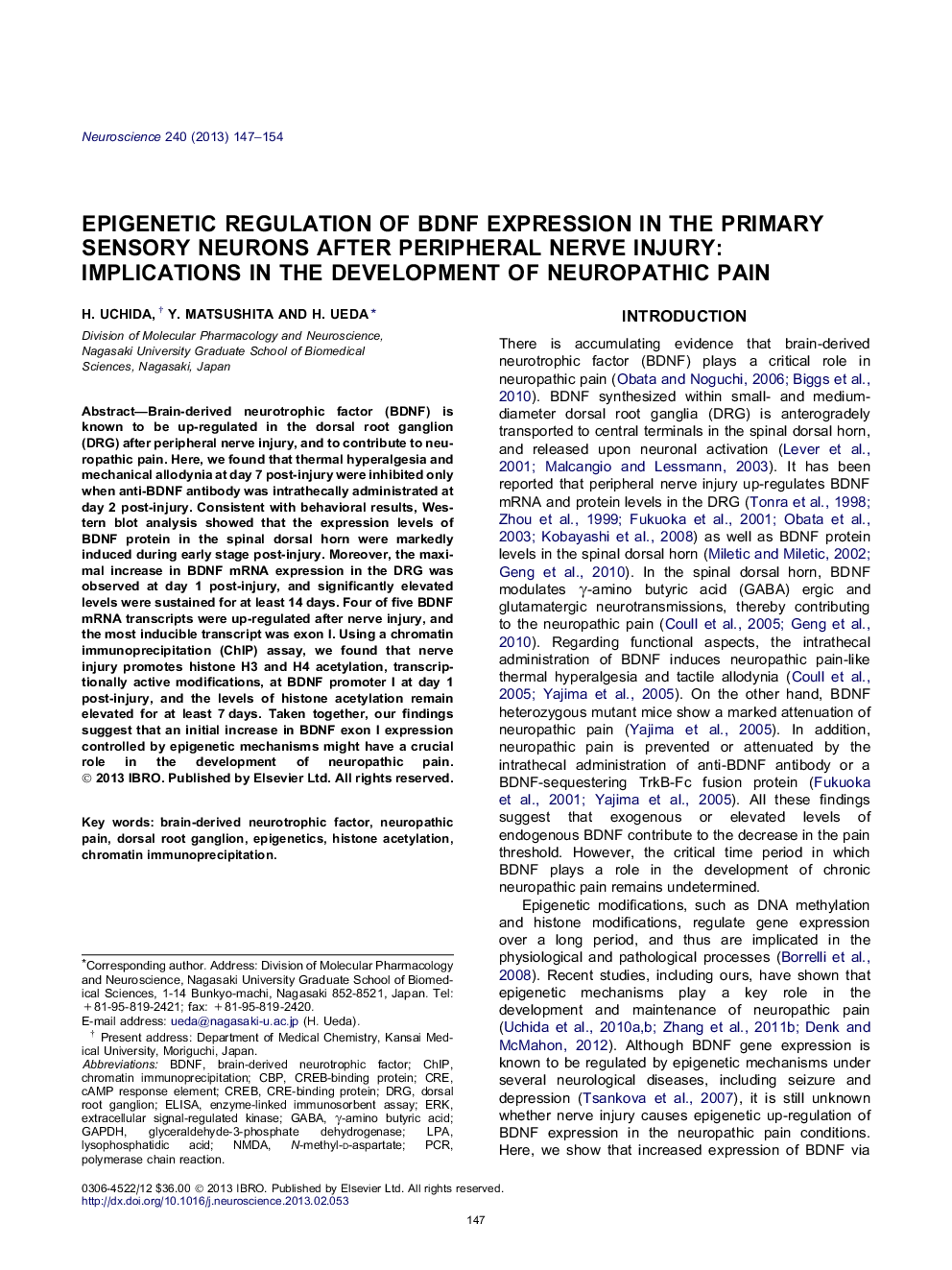| کد مقاله | کد نشریه | سال انتشار | مقاله انگلیسی | نسخه تمام متن |
|---|---|---|---|---|
| 6274925 | 1614836 | 2013 | 8 صفحه PDF | دانلود رایگان |

Brain-derived neurotrophic factor (BDNF) is known to be up-regulated in the dorsal root ganglion (DRG) after peripheral nerve injury, and to contribute to neuropathic pain. Here, we found that thermal hyperalgesia and mechanical allodynia at day 7 post-injury were inhibited only when anti-BDNF antibody was intrathecally administrated at day 2 post-injury. Consistent with behavioral results, Western blot analysis showed that the expression levels of BDNF protein in the spinal dorsal horn were markedly induced during early stage post-injury. Moreover, the maximal increase in BDNF mRNA expression in the DRG was observed at day 1 post-injury, and significantly elevated levels were sustained for at least 14 days. Four of five BDNF mRNA transcripts were up-regulated after nerve injury, and the most inducible transcript was exon I. Using a chromatin immunoprecipitation (ChIP) assay, we found that nerve injury promotes histone H3 and H4 acetylation, transcriptionally active modifications, at BDNF promoter I at day 1 post-injury, and the levels of histone acetylation remain elevated for at least 7 days. Taken together, our findings suggest that an initial increase in BDNF exon I expression controlled by epigenetic mechanisms might have a crucial role in the development of neuropathic pain.
► Epigenetic gene regulation plays a critical role in neuropathic pain.
► Initial anti-BDNF antibody treatment blocks the development of neuropathic pain.
► Injury initially induces BDNF expression in the spinal dorsal horn and DRG.
► BDNF exon I transcript is responsive to injury in the DRG.
► Injury initially up-regulates histone H3 and H4 acetylation at BDNF promoter I.
Journal: Neuroscience - Volume 240, 14 June 2013, Pages 147–154